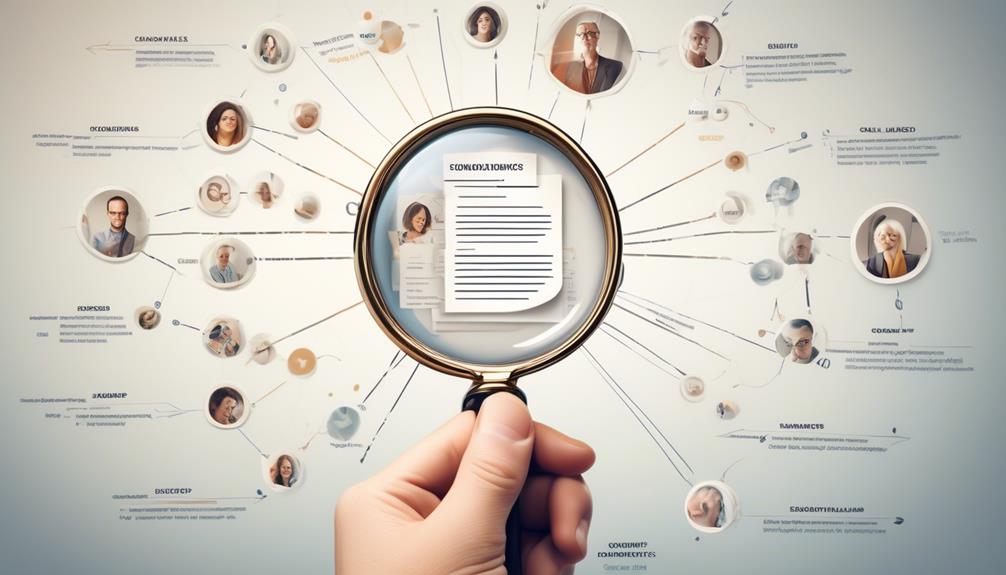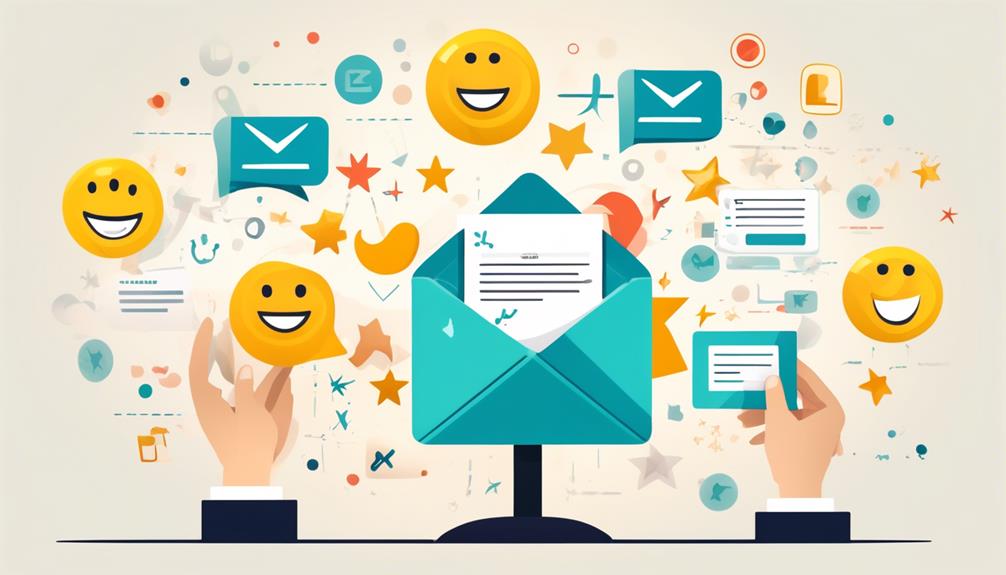It’s likely that you’ve gotten an email that seemed like it was made just for you, connecting with your specific needs or interests. This personalized approach doesn’t happen by chance; it results from effectively using email segmentation strategies.
Imagine being able to send targeted emails to different customer segments based on their behaviors, preferences, or demographics. The impact on engagement and conversion rates can be significant.
But how exactly can you achieve this level of personalization in your email campaigns? Let’s explore some top email campaign segmentation strategies that can help you tailor your content to your audience in a way that resonates with them on a deeper level.
Key Takeaways
- Understanding email segmentation is crucial for effective personalization in email campaigns.
- Setting specific segmentation goals helps in targeting the right audience and achieving desired outcomes.
- Personalized email campaigns have numerous benefits, including increased engagement, conversion rates, and customer satisfaction.
- To implement segmentation, it is important to identify relevant data points, analyze customer behavior, and create targeted content based on automation, purchase history, demographics, and engagement data.
Understanding Email Segmentation
To effectively utilize email segmentation in your marketing strategy, it’s vital to understand the underlying principles and benefits of this targeted approach.
Email segmentation involves dividing your subscribers into specific, targeted groups based on criteria such as demographics, behaviors, preferences, spending habits, and more. This allows for the delivery of personalized content and offers to each group, increasing the relevance and effectiveness of your email marketing campaigns.
By segmenting based on customer behavior, lifecycle stage, and purchase history, you can effectively target specific groups of customers and tailor your content to their needs and interests.
The key benefit of email segmentation is the potential for higher conversion rates and increased revenue. Studies have shown potential increases of up to 760% in revenue from segmented campaigns. Additionally, email segmentation enables you to deliver personalized content, improve engagement, and nurture leads through targeted campaigns.
It provides the opportunity to send specific content to specific groups, ensuring that your emails are more relevant and valuable to your subscribers. Understanding and implementing email segmentation can significantly enhance the performance and impact of your email marketing efforts.
Setting Segmentation Goals

Define clear and measurable segmentation goals to guide your email campaign strategy effectively. Setting segmentation goals is crucial for achieving success in email marketing. Here are five key elements to consider when setting your segmentation goals:
- Specific Outcomes: Determine the specific outcomes you want to achieve through segmentation, such as increased open rates, higher engagement, or improved conversion rates.
- Alignment with Marketing Objectives: Ensure that your segmentation goals align with your overall marketing objectives to contribute to your business’s success.
- Tailored Content and Messaging: Utilize segmentation goals to tailor content, offers, and messaging to different audience segments for more personalized and effective communication.
- Regular Assessment and Adjustment: It’s important to regularly assess and adjust your segmentation goals based on campaign performance and evolving customer preferences and behaviors.
- Utilization of Customer Data: Use customer data to create new lists and send targeted, personalized emails based on your segmentation strategy.
Identifying Relevant Data Points
To effectively segment your email list, you need to pinpoint the most relevant data points that will help you understand your customers better.
Analyzing customer behavior, preferences, and engagement levels will provide valuable insights for creating targeted segments.
Data Points for Segmentation
How can you effectively identify the relevant data points for email segmentation to enhance personalization and tailored content?
When segmenting your email list, consider utilizing a combination of demographic segmentation, behavioral segmentation, and customer lifecycle stage as key data points.
Additionally, incorporating data points such as purchase history, customer interests, and engagement level can further enhance the effectiveness of your segmented lists.
To ensure personalized content, continuous analysis and refinement of these data points are essential to align with customer preferences and behavior.
Customer Behavior Analysis
By analyzing customer behavior, you can pinpoint relevant data points crucial for effective email segmentation, allowing you to tailor your marketing campaigns with precision and relevance.
Customer behavior analysis is the foundation of successful email list segmentation. It involves examining how your audience interacts with your emails, website, and products. By understanding their preferences, purchase history, browsing patterns, and engagement levels, you can segment your email list based on their specific interests and actions.
Behavioral segmentation is the practice of dividing your audience into groups based on their behaviors, enabling you to send targeted and personalized content.
To optimize your email marketing best practices, segmenting your email list is essential. Use the data from customer behavior analysis to segment your list and deliver highly relevant and engaging content to your audience.
Targeted Content Creation
When identifying relevant data points for segmentation, you can strategically automate the capture of crucial information within your email service provider to facilitate effective targeted content creation. By doing so, you can ensure that your email marketing efforts are tailored to the specific interests and behaviors of your customers.
Here’s how you can identify the most relevant data points for creating personalized content:
- Utilize purchase history and browsing behavior to send targeted product recommendations.
- Segment customers based on demographics such as age, gender, location, and income level.
- Leverage email engagement data to create new and engaging content for specific audience groups.
- Use survey responses and feedback to tailor content that addresses the unique needs and preferences of different segments.
- Analyze click-through rates and open rates to refine your segmentation and send more relevant content.
Automating Data Capture

Automating data capture is essential for streamlining the process of gathering and managing customer information.
By automating data capture, businesses can ensure the accuracy and efficiency of customer records, thus saving time and resources.
This strategy enables personalized email campaigns by allowing for segmentation based on real-time customer insights and the creation of dynamic, targeted content.
Data Collection Automation
To enhance the effectiveness of your email campaign segmentation, implementing data collection automation is a strategic and efficient approach. By utilizing automation tools, you can streamline the process of gathering and organizing data from various touchpoints, such as interactions with your website, into a centralized system. This ensures that you can collect data from specific groups and engage subscribers more effectively.
Automating data capture not only ensures accuracy but also reduces manual effort and provides real-time insights for targeted segmentation. With continuous accumulation of valuable customer data, you can personalize your email campaigns based on psychographic segmentation and improve the overall effectiveness of your marketing automation efforts.
Incorporating data collection automation improves efficiency and scalability in managing customer information for segmentation and personalization.
- Streamline data gathering and organization
- Collect data from specific groups
- Reduce manual effort and ensure accuracy
- Provide real-time insights for targeted segmentation
- Improve scalability in managing customer information
Segmentation Based on Data
Implementing data collection automation has revolutionized the way businesses gather and organize customer information. This technology enables more personalized and targeted email campaigns based on identified data points.
By automating segmentation, businesses can create segments based on specific customer behaviors, preferences, and interactions. This allows for highly personalized email campaigns. Utilizing if/then statements, businesses can automate the capture of data such as email engagement, website behavior, purchase history, and product activity.
This automation helps in identifying relevant data points for segmentation, ensuring that the right content reaches the right audience. Businesses can create segments based on psychographic segmentation, purchase history, income level, and website visitors. This allows for tailoring email content to resonate with each segment.
Automating data capture empowers businesses to send personalized content that drives engagement and conversions.
Personalized Content Creation
By automating the capture and analysis of customer data, you can effectively tailor your email content to resonate with specific segments, driving higher engagement and conversions. Utilize segmentation to create personalized and highly relevant content that will interact with your emails.
Implement psychographic segmentation to understand the motivations and preferences of different customer segments. Use segmentation to craft segmented emails that cater to the specific needs and interests of your audience. Tailor your content based on the insights gained from segmented data, ensuring that each email speaks directly to the recipients’ interests.
Implement automated data capture to streamline the process of gathering and organizing customer data, enabling targeted and personalized content creation.
Creating Segments in ESP
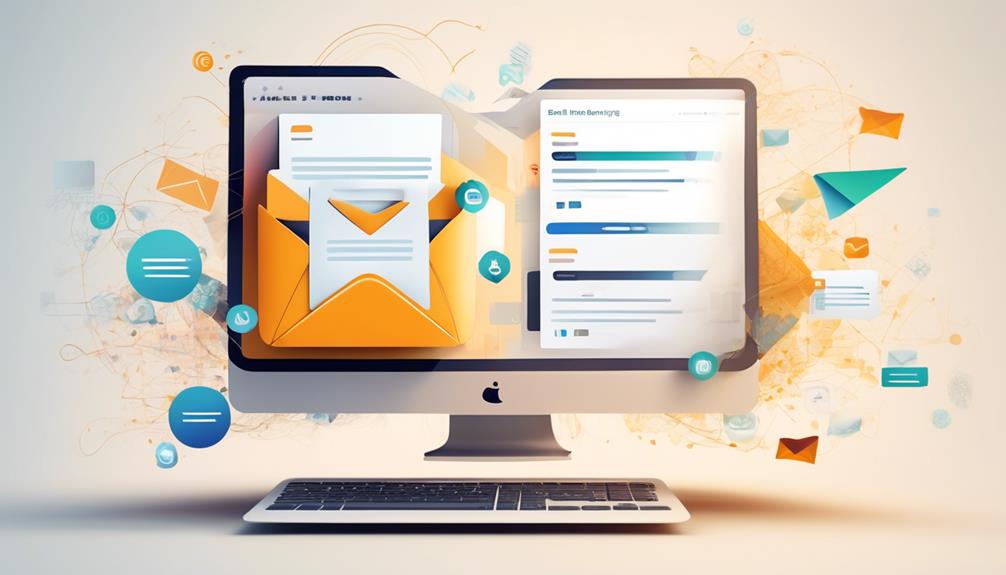
Leverage the if/then statement capabilities of your ESP to automate segmentation processes based on specific user actions or characteristics, facilitating targeted and personalized email campaigns.
Marketers use email service providers (ESPs) to create segments based on various data points such as demographics, behavior, and psychographic segmentation. By splitting your email list into groups based on these segments, you can tailor your content to resonate with each segment, resulting in higher engagement and conversion rates.
Creating segments in ESP allows you to deliver relevant content to engaged subscribers, leading to increased revenue from segmented campaigns. To achieve this, identify relevant data points and automate their capture within your email service provider. Implement clear goals and strategies within your ESP to enhance your segmentation system and overall email campaign effectiveness.
Crafting Segment-Specific Emails
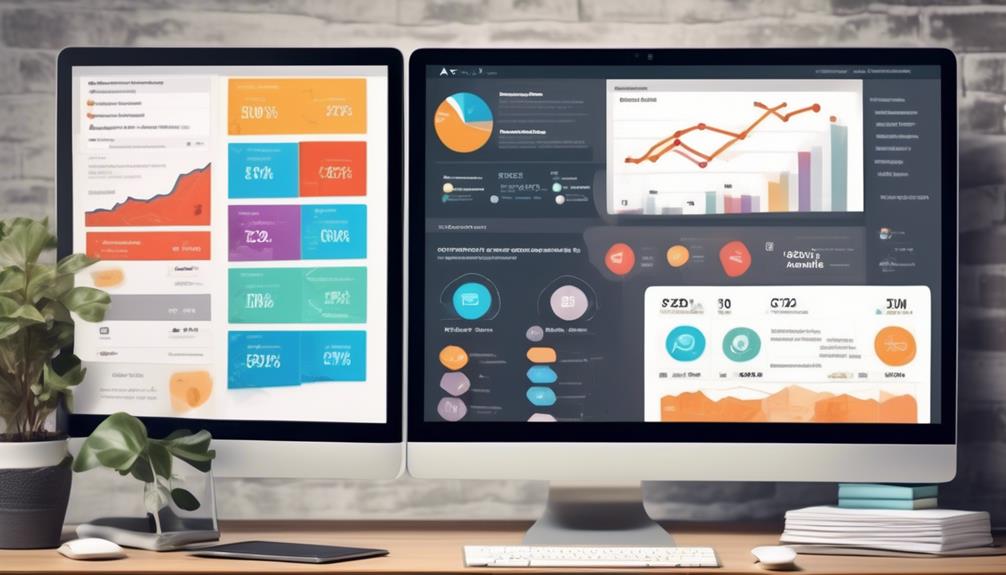
To ensure your segmented email campaigns effectively resonate with specific user groups, crafting segment-specific emails is crucial for engaging and converting each segment based on their unique interests and preferences.
Tailoring your email content to match specific segments’ interests and preferences is essential for driving engagement and response rates. Personalizing offers and promotions based on each segment’s behavior and past interactions can significantly increase email engagement and conversion.
Using dynamic content and targeted messaging allows you to deliver more relevant and personalized content to each segment, leading to higher response rates and improved customer satisfaction.
Implementing creative methods to gather data and insights for better segmentation and personalization is crucial for refining your email strategy and optimizing your email design for each segment.
Continuously analyzing and refining segments based on customer behavior and preferences is key to ensuring that your email marketing segmentation remains effective and relevant over time.
Demographic Segmentation Strategies
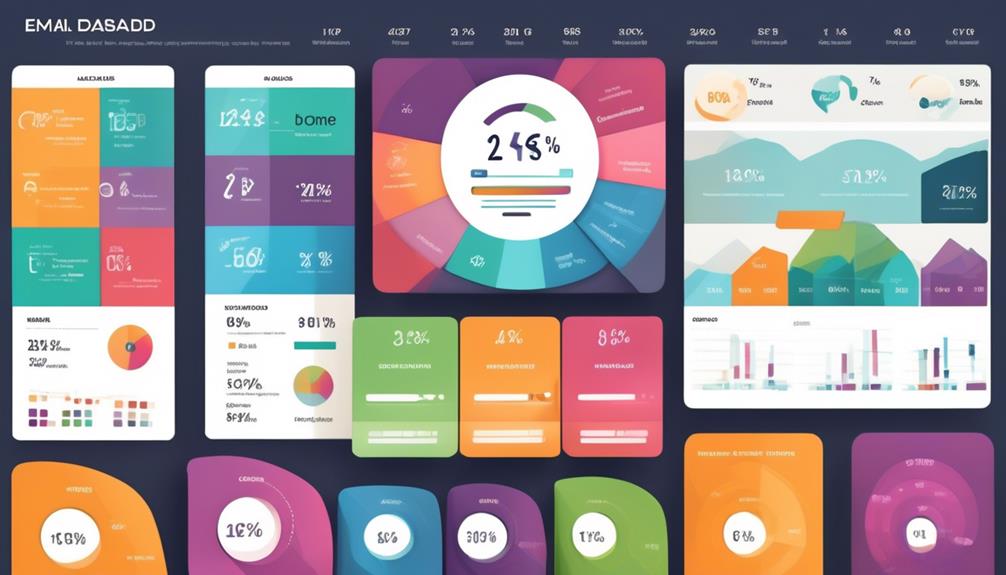
When implementing demographic segmentation strategies, consider categorizing subscribers by age, gender, location, or income level to target specific groups effectively. Demographic segmentation allows email marketers to tailor content and offers aligned with customer profiles, resulting in higher open rates and engagement. By segmenting subscribers based on demographic data, you can send targeted emails that resonate with the unique characteristics of each group, thereby increasing the likelihood of conversions and customer satisfaction.
| Demographic | Description | Example |
|---|---|---|
| Age | Categorize subscribers based on their age group | 18-25, 26-35, 36-45, 46-55, 55+ |
| Gender | Segment subscribers based on their gender | Male, Female, Non-binary, Prefer not to say |
| Location | Target subscribers based on their geographical location | Country, State, City |
| Income Level | Segment subscribers based on their income level | Low income, Middle income, High income |
| Education | Categorize subscribers by their educational level | High school, Bachelor’s degree, Master’s degree |
Behavioral Segmentation Best Practices
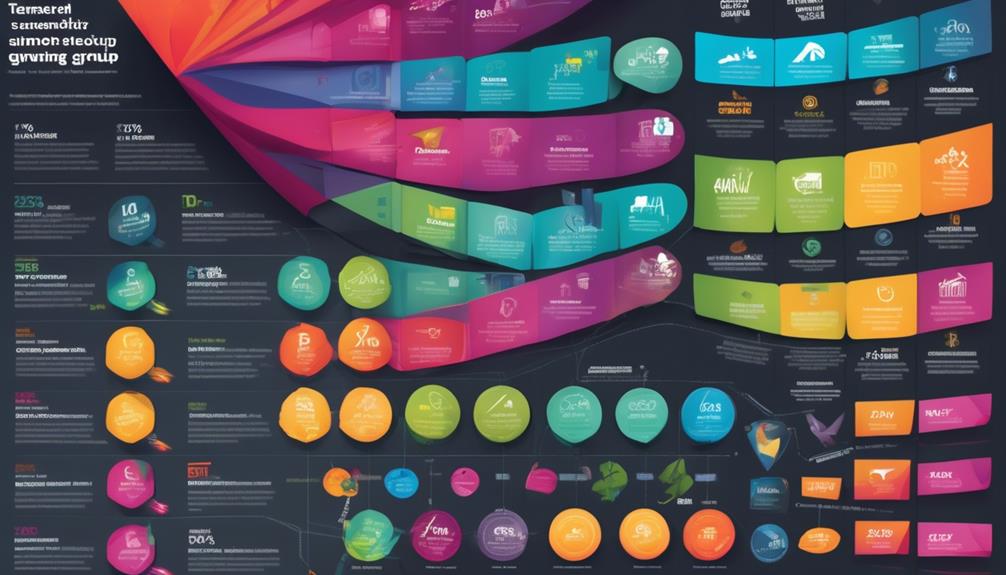
By analyzing the actions and interactions of your subscribers, you can implement behavioral segmentation strategies to further personalize your email campaigns and drive greater engagement and conversions.
Utilize your marketing platform to segment your subscribers based on their behavior, such as their past purchases, website visits, email opens, and clicks. This allows you to create segments for people who’ve shown interest in specific products or services, enabling you to send your next email with tailored content that caters to their preferences.
Additionally, consider segmenting based on how frequently subscribers engage with your emails, allowing you to tailor the frequency of emails to match their preferences.
Use behavioral segmentation to create a segment for subscribers who’ve abandoned their shopping carts, and send targeted emails with incentives to encourage them to complete their purchase.
Furthermore, segment subscribers to take specific actions, such as leaving a review or referring a friend, and send personalized emails to prompt them to take the desired action.
Incorporating these behavioral segmentation best practices will elevate the effectiveness of your email campaigns.
Frequently Asked Questions
What Is the Best Way to Run Segmented Email Campaign?
To run a segmented email campaign effectively, there are several steps you should follow:
- Define clear goals and identify relevant data points. This will help you understand the specific objectives of your campaign and the data you need to collect to achieve those goals.
- Automate data collection and use if/then statements to create targeted segments. By collecting data automatically and using if/then statements, you can create segments based on specific criteria, such as demographics, past purchase behavior, or engagement with previous emails.
- Write tailored emails for each segment and personalize by addressing subscribers by name. Once you have your segments created, you can craft emails that are specifically targeted to each group. Personalization, such as addressing subscribers by their name, can also help increase engagement.
- Encourage subscribers to set preferences during sign-up. During the sign-up process, provide options for subscribers to choose their preferences and interests. This will allow you to further segment your email list and send more relevant content.
How Do You Segment and Personalize Email Campaigns to Target Specific Audience Groups?
To segment and personalize email campaigns, there are several steps that need to be followed.
First, it is important to identify specific audience groups based on demographics, behavior, and relationships. This can be done by analyzing data and understanding the characteristics of different customer segments.
Next, utilize if/then statements and various segmentation strategies for automated email segmentation. This involves setting up rules and conditions that will automatically place customers into specific segments based on their actions or characteristics.
Once the segments have been created, it is important to optimize campaigns by setting goals, capturing relevant data, and creating tailored emails. This involves understanding the objectives of the campaign and using data to inform the content and design of the emails.
Finally, it is important to implement specific segmentation strategies such as demographic, psychographic, relationship-based, behavioral, and personalized workflows for effective personalization. This ensures that the content of the emails is relevant and engaging to different audience segments.
What Is the Most Effective Email Marketing Campaign Strategy?
The most effective email marketing campaign strategy involves comprehensive segmentation and personalized content. By dividing your audience based on demographics, behaviors, and preferences, you can tailor your messages for maximum relevance.
Utilize dynamic content and targeted offers to capture attention and drive action. Emphasize customer-centric communication, aiming to provide value and build relationships.
Continuously analyze and refine your strategies to ensure ongoing success and engagement.
What Are the 7 Email Marketing Strategies?
To effectively target your audience, consider these 7 email marketing strategies:
- Segment your email list based on demographics, behaviors, preferences, spending habits, and location.
- Craft personalized and relevant content.
- Use compelling subject lines.
- Optimize for mobile devices.
- Incorporate interactive elements.
- Test and analyze your campaigns.
- Continuously refine your approach based on data-driven insights.
These strategies will enhance engagement and drive higher conversion rates for your email campaigns.
Conclusion
As you implement email segmentation strategies, think of each segment as a unique puzzle piece that fits perfectly into your overall marketing strategy. By understanding the nuances of your audience and creating tailored content, you can build stronger relationships and drive better results.
Just as a skilled artist carefully selects the right colors to bring a painting to life, your strategic use of segmentation can breathe new life into your email campaigns, creating a masterpiece of personalized communication.
